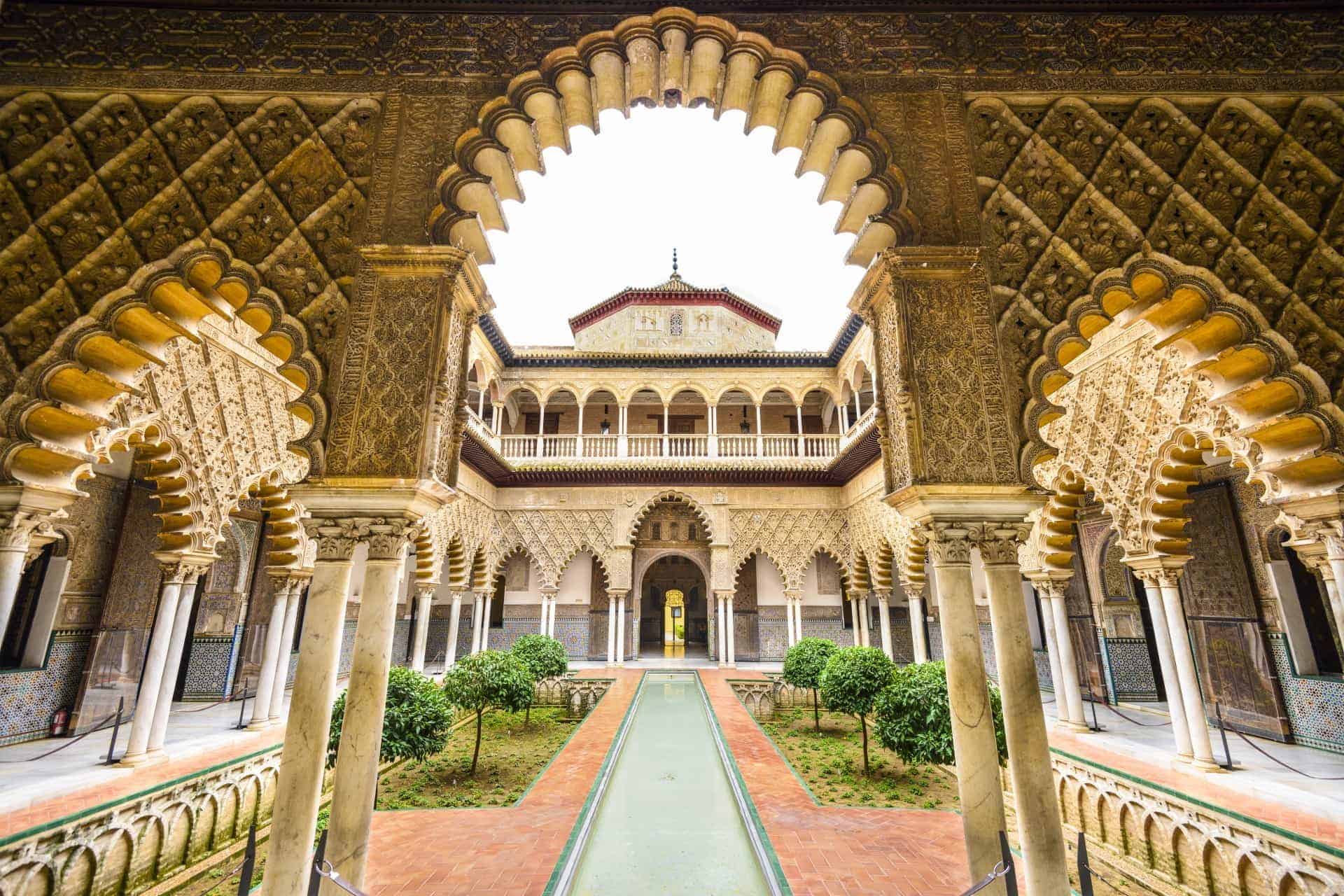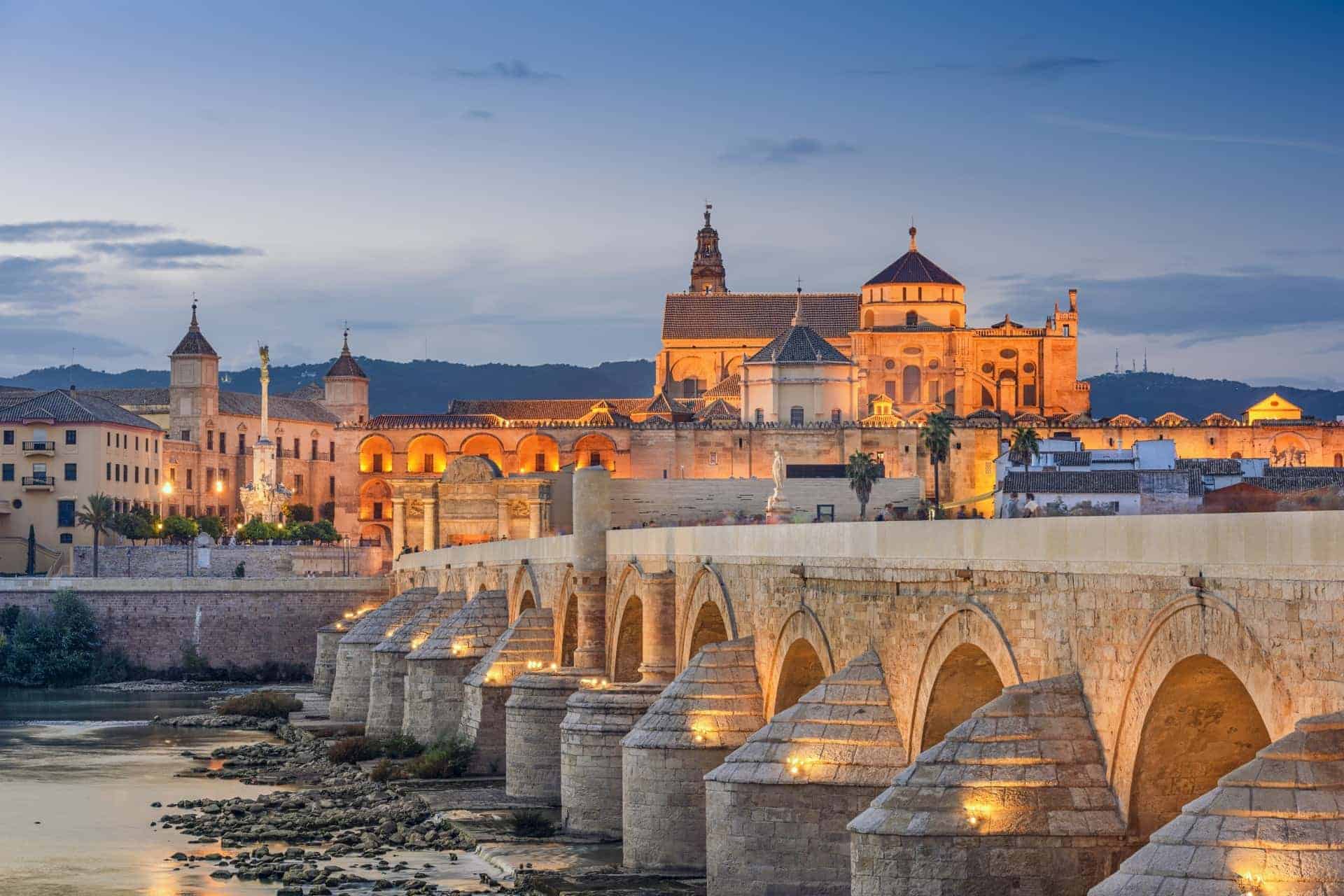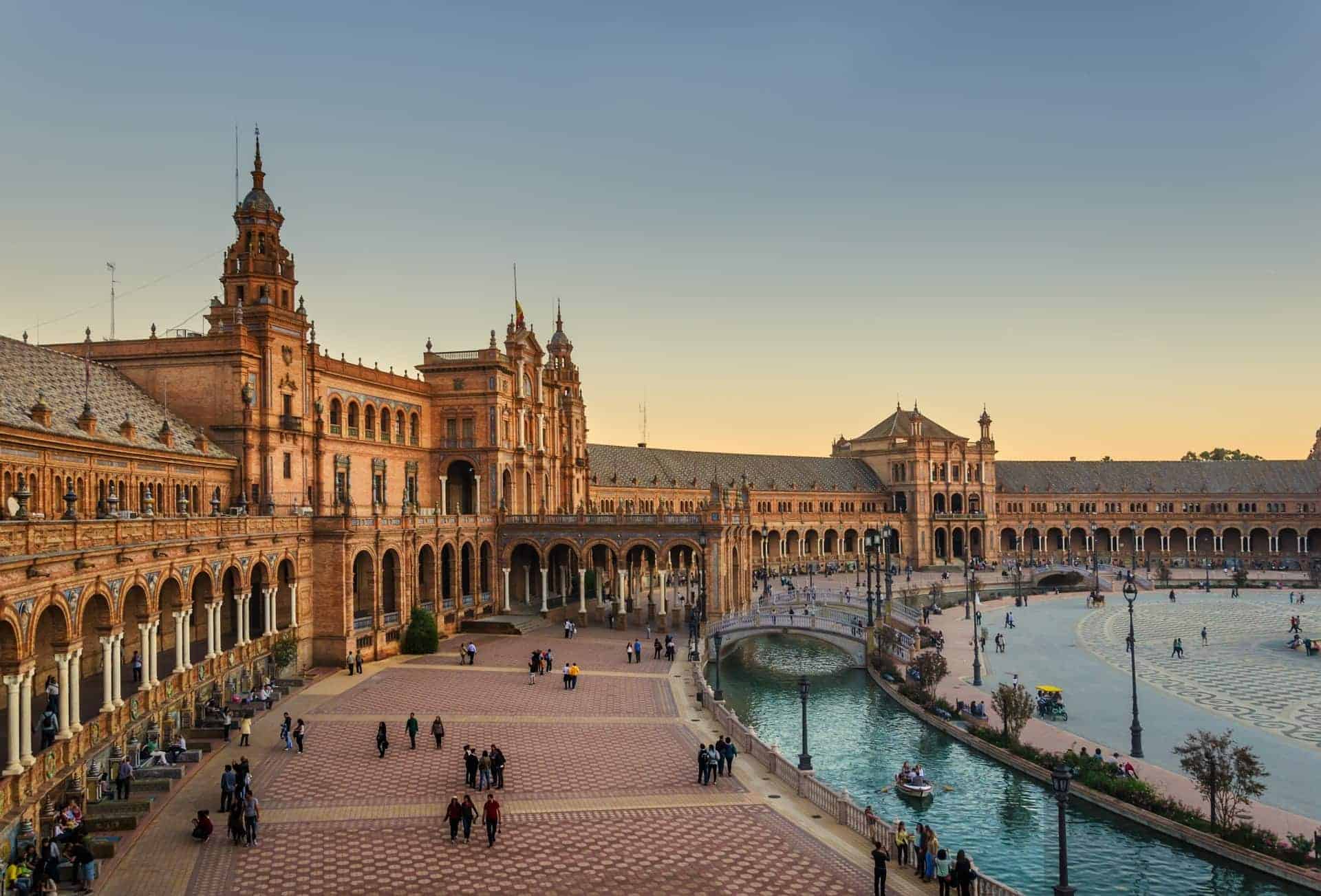Travellers should familiarise themselves with our Peace of mind travel policy for Covid-19 as well as the terms and conditions applicable at the time of booking.
Moors in Spain; Small group tour
Join Odyssey Traveller on this 20- exploring 's Moorish past. Together, led by your , we will discover the traces of the art, , and religious reign and culture of the Moors in by visiting their former strongholds in the Spanish capital of , before moving further south to Toledo in Castilla-La Mancha and several cities in the charming region of Andalusia with its . This seniors small group is part of a collection of and offered each year.
Despite their fall and expulsion from the during the Reconquista (Christian Reconquest) in the 15th century, the Moors in have a long and riveting history. Their enduring influence on this can be seen from the ruins of their citadels still standing on hilltops or the , to the grand bazaars that continue to lend colour and life to the , will provide us valuable insights about modern-day as we head from central to and the .
This will be escorted by an Odyssey Program Leader, the and a local who will impart their knowledge about the places we will visit. Odyssey Traveller has been serving global travellers since 1983, conducting educational tours with small groups of mature and senior travellers . Group size is typically between 6 to 12 people who are couples and solo travellers . The cost of the is inclusive of all entrances, tipping, and majority of the meals. On this we will dine in local restaurants and go on a wine to enjoy 's regional cuisines and rich wine culture.
This Small group tour of Spain links to the Morocco tour.
History of the Moors in Spain
Who were the Moors? Moor derives from the Latin Maurus, which the Romans used to denote the people of Mauretania (parts of present-day Algeria and Morocco). It later became applied to Arabs and Muslims living in Europe, and to the art, architecture, and culture of Muslim Andalusia and North Africa.
In 711, a group of Muslims from North Africa, led by the Berber general Tariq ibn-Ziyad, captured the Iberian Peninsula (present-day Spain and Portugal), which at the time was ruled first by the Romans, followed by the Visigoths under their Visigothic Kingdom of Hispania. The Berber forces were reinforced by the Arabs, and the strength of their combined forces led to the establishment of the independent Emirate of Cordoba ruled by the Umayyad dynasty, and the unification of the Muslim-ruled areas in the peninsula, now named Al-Andalus. (Cordoba is now part of the Spanish region of Andalusia in the south of the country).
Christian and Muslim forces fought in Europe for centuries, with the Islamic forces also dealing with internal conflicts due to ethnic clashes between the Berbers and Arabs. Traditional historiography states that the Christian victory at the Battle of Covadonga in the 8th century was the beginning of the Reconquista. The 11th century saw the disintegration of Cordoba and the beginning of the Crusades, which linked the fight on the Iberian peninsula with the wider fight of European Christendom.
The Moors' last stronghold in Spain was Granada, held by the Nasrid dynasty. After the fall of Cordoba in 1236, the Nasrids aligned themselves with Fernando III of Castile. However, in 1492, after months of war, Boabdil, the 22nd Nasrid ruler of Granada, surrendered complete control of the emirate to the Catholic monarchs, Ferdinand II of Aragon and Isabella I of Castile. This marked the completion of the Reconquista, and the end of the rule of Moors in Spain.
Highlights of the Tour
This tour will spend multiple nights in the following cities:
Madrid
Madrid developed as a medina (Arab town) in the 9th century, growing around the alcazar or castle overlooking the Manzanares River. It was mentioned in historical documents as “Majerit” in 932 AD when the Christian forces of Ramiro II of Leon attacked the city. It was eventually captured from the Muslims by Alfonso VI of Castile and Leon in 1083. Many kings spent time in this city, and in 1309, the Cortes, precursor to the Spanish Parliament, was first called in Madrid.
- Prado Museum - The Museo Nacional del Prado in Madrid opened to the public in 1819, starting with 1,510 paintings from the royal collection and which grew throughout the centuries.
- Royal - which grew from a alcazar to the largest functioning royal in Europe. Sitting on 135,000 square metres with more than 3,000 rooms, the is now only used for official functions.
- Campo del Moro - "Moor's Field", where an Almoravid army laid siege to (and later retreated from) the in the 12th ; this was transformed into a garden by Queen Maria Cristina in the 18th . Located beneath the Royal with Neoclassical fountains, the offer exceptional views of the and a relaxing atmosphere.
- Arab Walls - built in the 9th , with ruins still visible in the modern
Toledo
An hour south of Madrid, sitting atop a gorge overlooking the Tagus River, is the magnificent city of Toledo. Toledo is a medieval town that has been heavily influenced by its mix of Christian, Jewish and Muslim inhabitants throughout the centuries. The historic city of Toledo was designated a UNESCO World Heritage Site in 1986 for being ‘a repository of more than 2,000 years of history’.
- Monasterio de San Juan de los Reyes - a Franciscan monastery founded in the 15th by King Ferdinand and Queen Isabella. Of interest are the shackles and manacles that adorn its facade; these were worn by the Christians taken prisoner by the Moors in , and freed during the Reconquista. The shackles and manacles were added to the architecture by the order of the Queen.
- Sinagoga del Transito - a richly decorated synagogue built in 1355, years before the expulsion of the Jews from Spain in 1492. This features the (12th to 17th centuries) which was a blending of European Christian and Islamic influences in architecture in Spain.
- Alcazar of Toledo - from the Arab al-qasr or "fortress", built on the highest part of the . This was renovated and rebuilt by the Christians. It was used as a royal by Charles I until the court moved to Madrid.
Cordoba
Cordoba was originally occupied by the Romans (152 BC) before being captured by the Muslims in 711. It became the Umayyad capital in 756 and grew rapidly, becoming the largest city in Europe by the 10th century. It eventually fell to Christian Spain in 1236, under the Castilian King Ferdinand. Our tour will give us glimpses of Cordoba's Moorish past, and the historic centre of the city which has been declared a UNESCO World Heritage Site in 1994.
We will visit:
- the Mezquita-Catedral de Córdoba (Mosque–Cathedral of Córdoba, the Grand Mosque), originally a mid-6th century Visigothic church turned into a mosque during Cordoba’s Islamic era. During the Reconquista, the Christian army entered Cordoba and celebrated the Holy Mass inside the mosque, converting the city and the mosque-cathedral back to the Catholic faith
- Alcazar of Cordoba, also known as Alcázar de los Reyes Cristianos, or "Castle of the Christian Monarchs". The Alcazar is located in the historic heart of the city, near the Grand Mosque. It has four towers, giving the fortress an almost square shape, and has a richly decorated interior with impressive mosaics.
- Medina Azahara, an archaeological site of a vast, fortified city built in the 10th century to serve as the seat of the Caliphate of Cordoba. This was inscribed as a UNESCO World Heritage Site in 2018. The city, complete with ceremonial halls, mosques, residences, a mint, and baths, was built on the orders of the first Umayyad Caliph of Cordoba, Abd-ar-Rahman III (912–961), to serve as a symbol of his and the Caliphate's power.
En route to Cordoba, we will visit La Bodega de las Estrellas, a traditional winery in Valdepeñas. Here we will enjoy a tour and a wine tasting. The grapes in La Bodega de las Estrellas are farmed organically and their wine-making is done naturally--a great introduction to Spain's rich wine culture.
Seville
Founded as the Roman city Hispalis and now the capital of the Andalusia region, Seville is a lively and disarming city, and a popular tourist destination in Spain.
Muslim possession of Seville ended with the Reconquista in 1248. The conquering Spanish Christians drove the Muslim and Jewish populations into exile, converting the synagogues and mosques into Catholic edifices. The first tribunal of the Spanish Inquisition was also held here in the 15th century. We will visit:
- The cathedral of Seville, the largest Gothic cathedral in the world with its Giralda Minaret standing at 96 meters. From this tower you can admire amazing views of the city. Once an Almohad mosque, it was turned into a Catholic Cathedral following the Reconquista in 1248 and now holds the remains of Juan of Aragon, son of Ferdinand and Isabella, and Christopher Columbus
- Barrio Santa Cruz - a "barrio" or neighbourhood where Seville's Jewish population was confined after the Reconquista; now a famous tourist destination, thanks to its picturesque alleys. It is the ultimate place where one can retrace the footprints of Jewish history in Spain
- The Alcázar (fortress) of Seville, imbued with Moorish influences, is the oldest royal palace still in use in Europe. The commission of a royal residence for King Pedro I in 1364 within the existing Moorish palace complex marked the beginning of the palace’s progressive reconstruction over the centuries that followed. It features a combination of Moorish, Mudejar, and European Renaissance and Baroque architectural and artistic elements.
Malaga
Malaga is the second-most-populous city in Andalusia after Seville. Founded by the Phoenicians, Malaga is considered one of the oldest city in Europe. It was under Islamic rule for 800 years, and we will be able to see the remnants of this long reign on our tour.
We will visit:
- Alcazaba de Málaga - from al-qasbah, "citadel"; this hilltop fortification is the best-preserved alcazaba in Spain, built in the 11th century, with the Moorish construction reusing the ruins of the original Roman fortification that stood in the area
- Castillo de Gibralfaro - situated above the Alcazaba, a fortress overlooking the city which originally served as a lighthouse and military barracks when Malaga was a port of the emirate of Granada
- Mercado de Atarazanas - Malaga's central market. The word atarazanas is Moorish in origin--"a place where ships are repaired"--as the location of the market used to be right at the sea's edge and was a shipyard in the 14th century.
Almeria
Almeria's name comes from al-Mariyyah, "the Watchtower", which is a reference to its Alcazaba or citadel. As part of the Caliphate of Cordoba, it grew prosperous in the 10th and 11th centuries, before falling to Christian forces in 1489.
- Alcazaba of Almeria - a fortified complex visible from any part of the city, and once the seat of the local government
- Castillo de San Cristobal - located near the Alcazaba and connected to it through walls
- Almeria Cathedral - a cathedral-fortress that is also known as the Cathedral of the Incarnation of Almería, built in Gothic and Renaissance styles
Granada
Located at the foot of the Sierra Nevada mountains, Granada was the last stronghold of the Moors in Spain. Moorish spirit and culture endure in the city today.
We will visit
- Granada's oldest centre of Muslim culture, the Albaicín (Albayzin), a UNESCO World Heritage Site. Albaicín retains the narrow winding streets dating back from its medieval Moorish era, and a brilliant place to begin our Moorish journey in Granada.
- La Alcaicería (Arab Spice Market) - home of the Great Bazaar of Granada, where you can spend hours browsing the goods on sale. Alcaicería, from the Arabic al-Kaysar-ia ("the place of Caesar"), refers to the time the Byzantine Emperor Justinian granted Arabs the exclusive right to manufacture and sell silk. This particular Alcaicería was built in the 15th century and was once home to more than 200 shops squeezed together in the narrow streets
- Capilla Real (Royal Chapel of Granada) - originally integrated with the Granada Cathedral, housing the tombs of Ferdinand and Isabella
- Alhambra and Generalife - Alhambra is the Arab citadel and palace, originally constructed in the 9th century upon Roman ruins, and the Generalife gardens (entry subject to availability) was once the summer palace and estate of the Nasrid rulers of Granada. Both are UNESCO World Heritage Sites, key to understanding Granada's Moorish past.
For more details, click the ‘Top 5’ or ‘Itinerary’ buttons above! If you’re keen to experience this tour, please call or send an email. Or, to book, simply fill in the form on the right hand side of this page.
Articles by Odyssey Traveller to help prepare for this Spain Small Group Tour for Seniors
The following list of articles published by Odyssey Traveller for mature aged and senior travellers to maximise their knowledge and enjoyment of Spain when visiting;
- Questions About Spain
- 15 of the best places in Spain to visit.
- Travel notes for Barcelona
- Ten of the best books published on Spain
- Ten of the Best art galleries in Europe to visit.
- Discovering Spain (and Portugal )
External articles to assist you on your visit to Spain
- Royal Palace
- History of Madrid
- History of Seville
- Spain's New World Heritage Site Is Putting Its Moorish History on the Map
- What Was Europe Like Under Moorish Rule?
- Who Were the Moors?
- Moor (definition)
Other Odyssey Tours
This is only one of many Spain and Portugal tours offered by Odyssey Traveller. Click the links to see our other tours to the Iberian Peninsula for mature and senior travellers.
























